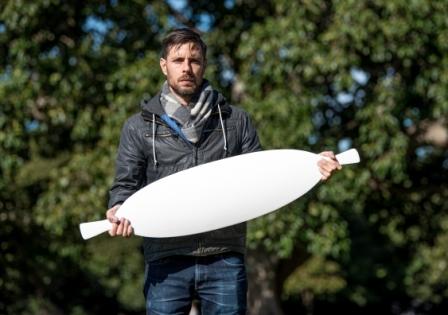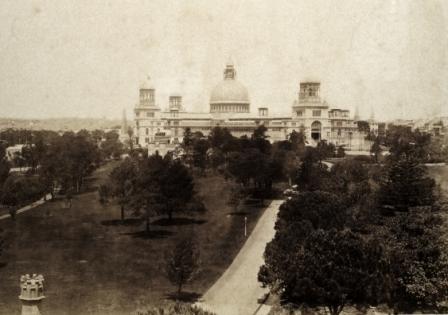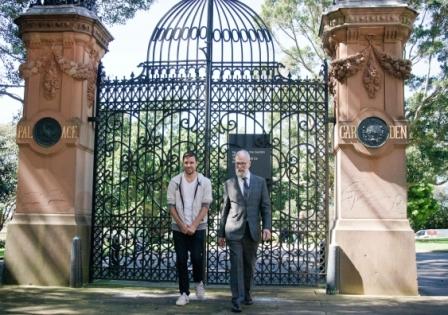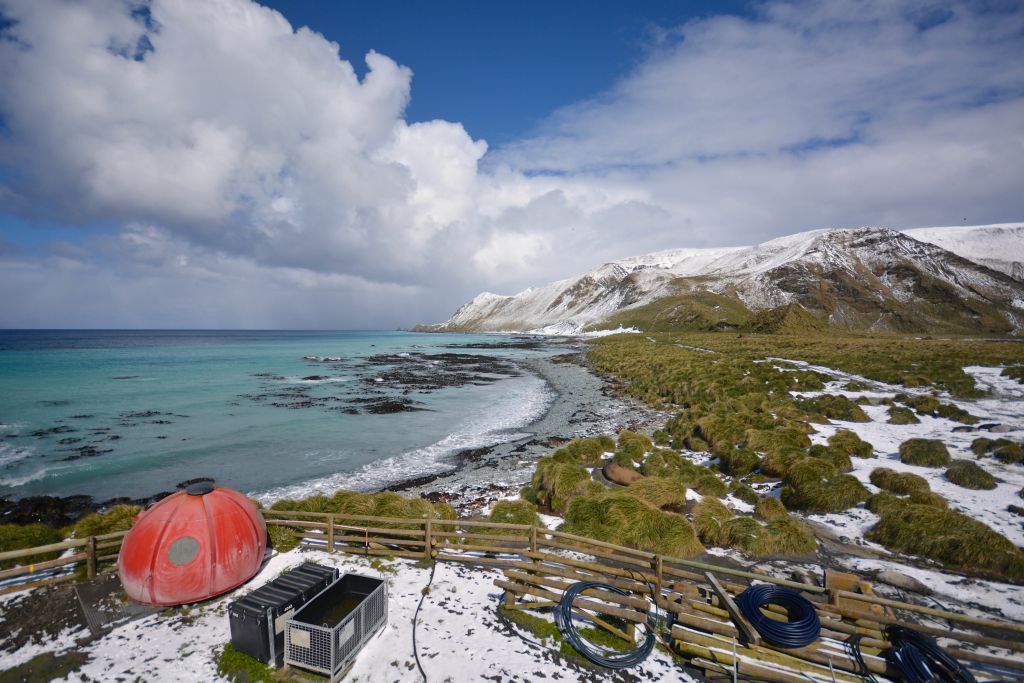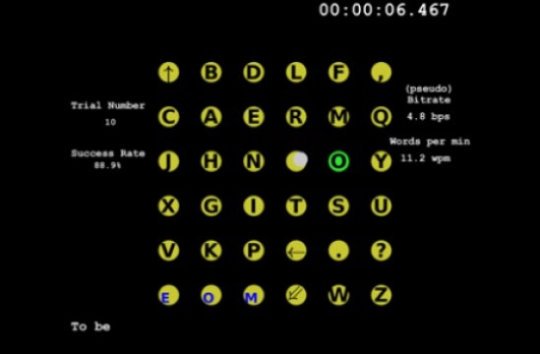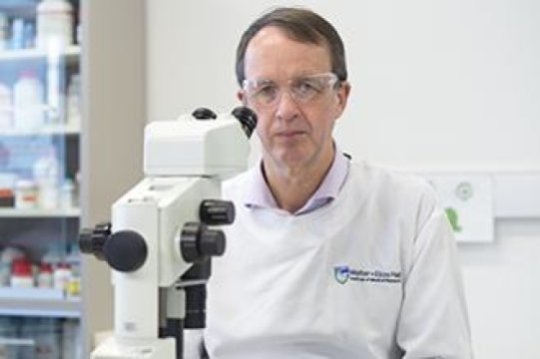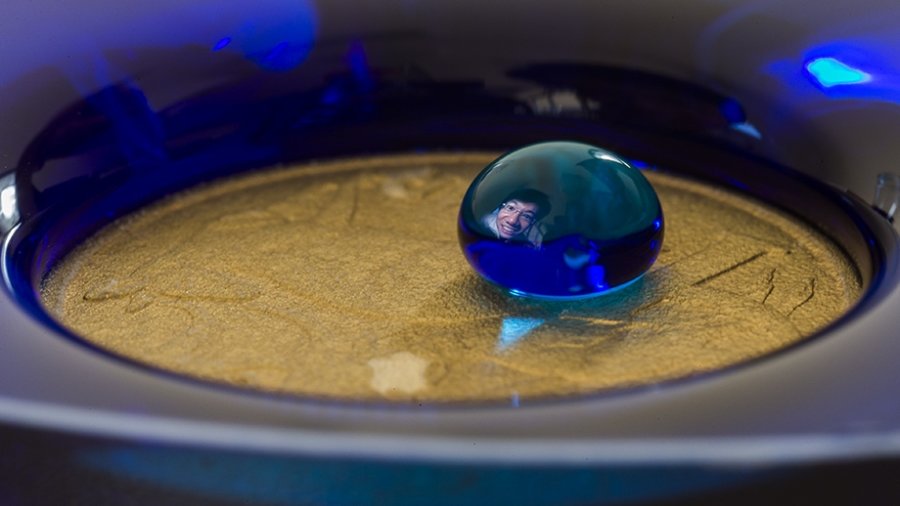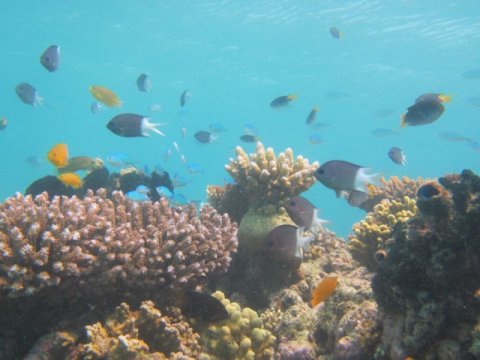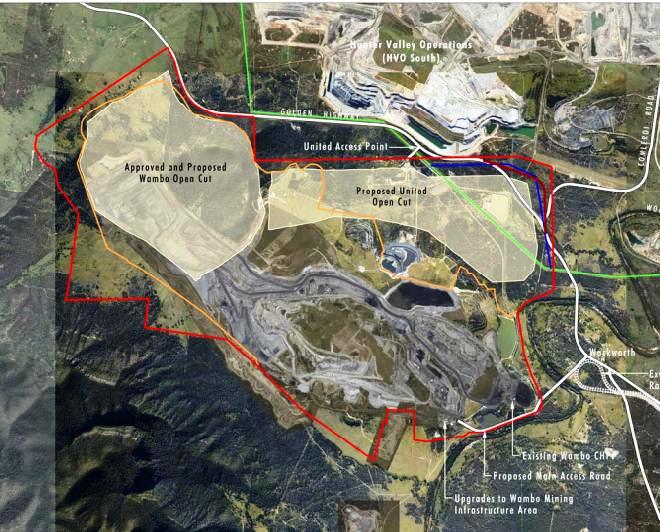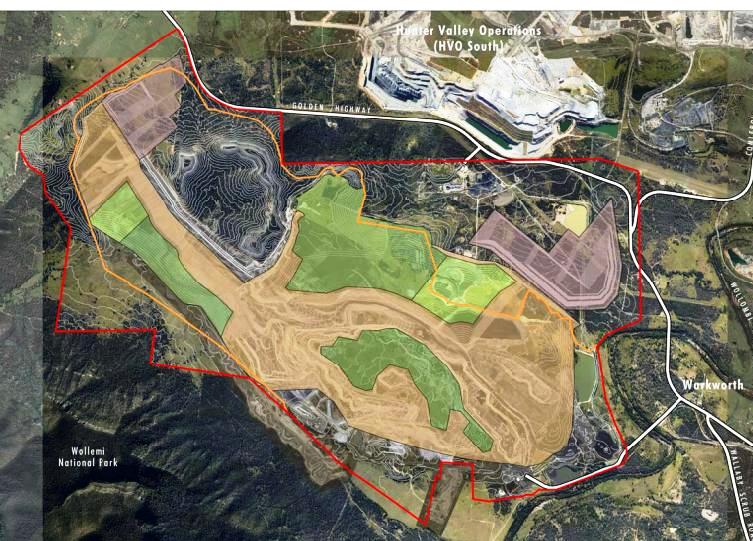Initiative To Restore One Million Corals Launches In The Caribbean And Florida Keys
September 12, 2016
Mote Marine Lab scientists restore staghorn corals in 2015 in the Florida Keys with volunteer helpers from the Combat Wounded Veteran Challenge and SCUBAnauts International. On Sept. 12, 2016, Mote signed a one-year agreement with The Nature Conservancy toward a proposed 15-year initiative to restore corals at unprecedented scales in the Florida Keys and Caribbean. Credit: Joe Berg/Way Down Video
Mote Marine Laboratory and The Nature Conservancy are partnering on a coral conservation initiative that will enable coral restoration at unprecedented scales throughout the Caribbean and the Florida Keys. The collaboration officially began Monday evening, Sept. 12, 2016, in Miami, with the signing of a one-year memorandum of understanding (MOU), enabling the first steps in a proposed 15-year initiative of joint coral reef restoration and conservation efforts.
The goals of the initiative are to restore more than one million corals across the region's reefs, share science-based coral restoration and conservation practices among U.S. and international Caribbean partners, and construct necessary facilities such as coral gene banks, which preserve genetically diverse coral tissue and help researchers find strains resilient to environmental change. The Sept. 12 MOU will officially launch one year of planning and preparation, which will include growing 50,000 coral fragments.
Coral reef systems help provide shoreline resiliency that protects coastal communities and create vibrant, healthy oceans for the people that depend on them. Ocean acidification, increasing ocean temperatures as a result of climate change, overfishing, unplanned coastal development and other associated stressors including waste water have damaged or decimated reefs around the world. Coral cover in Florida and the Caribbean has declined by 50 to 80 percent in some areas in just the last three decades.
"As global challenges to the long-term sustainability of coral reefs intensify, so must our efforts to understand and address them," said Dr. Michael P. Crosby, President & CEO of Mote. "The basic and transformative research that Mote conducts is vital, but we also have a responsibility to translate and transfer the findings of our science into positive ecological, societal and economic impacts. Proactively restoring reefs at a regionally strategic scale, combined with establishing a network of coral gene banks to safeguard essential biodiversity, is unprecedented and allows for all three benefits: helping replenish some of the ocean's most biodiverse ecosystems, educating and involving communities that are intimately linked to them, and preserving livelihoods -- the billions of dollars generated by reef-related economic activity."
Mote -- an independent, nonprofit marine science and education institution of five campuses from Sarasota, Florida to the Florida Keys that conducts diverse research programs around the world -- has developed innovative technologies to grow staghorn, brain, boulder and star coral fragments and planted approximately 20,000 of them onto depleted reefs in the Florida Keys. In early 2017 Mote plans to open a new coral reef research and education facility at its Summerland Key campus, where Mote scientists have already pioneered groundbreaking methods to restore reef-building corals at accelerated rates and begun to genetically identify staghorn coral strains for potential resilience against threats.
"We are accountable to future generations for securing the very resources that have helped us and generations before us to thrive," said Dr. Luis Solórzano, Executive Director of The Nature Conservancy's Caribbean Program. "With the threats of climate change, unsustainable development, overfishing and pollution, this partnership between The Nature Conservancy and Mote Marine Lab offers hope for the future of coral reefs and the systems they support. It is our imperative to engage leading scientists, advance innovative coral restoration practices and work collaboratively in order to safeguard these critical ecosystems."
"Coral reefs are critical ecosystems for sustaining the integrity of our marine habitats, natural resources and species, as well as for protecting our coastal areas. The decline of our coral reef systems from climate change and other human related impacts has serious consequences to the health and well-being of people and nature and requires that we take bold actions to transform the rate and scale of coral conservation," said Temperince Morgan, Director of The Nature Conservancy in Florida.
"We are excited to be joining forces with our Caribbean Program and Mote to step up to this challenge in an unprecedented way by applying our extensive experience in coral restoration to further develop and apply the science needed to conserve one of the most valued and threatened marine habitats in the world."
The Nature Conservancy is an international conservation organization working to protect the lands and waters on which all life depends.
Throughout the Caribbean and Florida, the Conservancy has worked with their partners to advance science-based conservation actions that include establishing coral nurseries and planting over 15,000 coral colonies from the nurseries onto reefs over the past 12 years in the Florida Keys, Dry Tortugas and U.S. Virgin Islands. These coral nurseries span from the Florida Keys all the way down to Grenada and are part of the largest restoration project of its kind.
By combining forces, two of the world's foremost independent marine research and conservation organizations will launch an innovative, international coral reef restoration initiative, giving Caribbean and Florida Keys coral reefs a better chance to survive and deliver ecological and economic benefits to future generations.
Key goals for the one-year agreement and onward
-Now through September 2017: The one-year MOU will help Mote and Conservancy staff secure additional coral restoration permits, plan their reef restoration initiative for the coming years, fundraise collaboratively and grow approximately 50,000 fragments of various coral species at Mote's facilities in the Florida Keys and the Conservancy's facilities in the U.S. Virgin Islands. Partners will focus on selecting coral strains resilient to increasing water temperatures, ocean acidification and disease. In early 2017, Mote will enhance these efforts by opening its new coral reef research facility on Summerland Key.
-By 2020: A networked coral gene bank of threatened Caribbean and Florida coral species will be established and accumulate genetically identified coral tissue samples as "insurance" against climate change and near-term catastrophic events for reefs, such as widespread bleaching, diseases and oil spills. Efforts will include enhancing or expanding coral nurseries and adding gene banks to Mote and Conservancy facilities in Florida and the U.S. Virgin Islands, respectively. Mote and Conservancy staff will forge and advance international partnerships for upcoming coral restoration in priority locations including Cuba and the Bahamas.
-By 2025: Mote and Conservancy staff plan to work with U.S. and international partners to restore corals at unprecedented rates for the Caribbean and the Florida Keys. Goals include planting one million coral fragments in the U.S. Virgin Islands and the Florida Keys and 500,000 in at least three other Caribbean nations. The partners aim to establish a new, permanent coral restoration facility in St. Croix to be jointly operated by Conservancy and Mote staff. They will also complete training of key local personnel working at U.S. and international coral restoration areas, and in the process, disseminate state-of-the-art coral science, conservation and restoration practices around the Caribbean.
Mote and the Conservancy will work together and leverage their ongoing research and community engagement programs to secure the philanthropic investments needed to implement these innovative programs for restoring coral reefs and engaging local communities to lead in these efforts.
Mote is already working with middle- and high school students in its Coral Research and Conservation Program that the Lab spearheaded with EARTHANGLE Inc. Now, the MOU between Mote and the Conservancy will help expand this program, with the ultimate goal of educating and engaging more students and their communities in coral reef conservation and restoration activities in the U.S. Virgin Islands and Florida Keys.
The above is reprinted from
materials provided by Mote Marine Laboratory.
NSW Wins National 2016 Rural Women's Award
Thursday, 15 September 2016
Accomplished food and lifestyle writer from Orange, Sophie Hansen, has won the 2016 National Rural Industries Research and Development Corporation (RIRDC) Rural Women’s Award at a gala ceremony in Canberra overnight.
Minister for Primary Industries Niall Blair, said Sophie’s win was well-deserved recognition of her efforts to promote food and agribusiness, and her inclusive approach to working with women in rural communities.
“Sophie’s extraordinary talents in the food and social media space are indicative of the innovative work being undertaken right across regional NSW,” Mr Blair said.
“Her project ‘My Open Kitchen’ shares the important story from paddock to plate and encourages farming businesses to use social media to strengthen rural communities.”
Sophie’s win follows in the footsteps of Central West landholder and sustainable agriculture trailblazer Pip Job, who in 2014 became the first NSW woman to win the National RIRDC Rural Women’s Award.
Sophie’s prize includes a bursary of $10,000 and the opportunity to share her vision and business model with communities across Australia.
Nominations for the 2017 NSW-ACT RIRDC Rural Women’s Award are currently open and close at the end of October 2016.
Time To Kill Off Wallarah 2 Coal Project
September 05, 2016: by Lock the Gate Alliance
The Hunter Central Rivers Alliance of over forty community groups has called on the Baird Government to terminate the Wallarah 2 coal mine project in Wyong's drinking water catchment, as the latest round of public consultation on the project ends today.
The proposed longwall coal mine by Korean state-owned resources company Kores has been the subject of a thirteen-year long stoush in Wyong shire. Both major political parties have at various stages pledged to stop the project, but it is now before Planning Minister Rob Stokes, awaiting his approval.
The latest amendment to the project – construction of a coal conveyor, rail loop, and train loading facility in suburban residential areas at Blue Haven – has been designed specifically to avoid using land owned by Darkinjung Aboriginal Land Council, which remains staunchly opposed to the Wallarah 2 project.
The mine continues to be opposed by local residents, local councils, the Central Coast Water Corporation, and the member for Wyong, David Harris.
“What do we have to do to get rid of this coal mine project?” asked Mike Campbell, a Hunter and Central Rivers Alliance member and Wyong shire resident that has fought Wallarah 2 for over a decade.
“Local residents don't want it, the councils don't want it, the water corporation doesn't want it, the land council doesn't want it, and both political parties have promised us they will stop it!”
“The Korean Government doesn't even seem to want it,” said Mr Campbell, referring to recent reports from Seoul that the government would withdraw its interests from international coal projects, “And the thermal coal market certainly doesn't need it,” he added.
“Yet the mine is now barrelling towards approval by the Baird Government. It doesn't make any sense. We call on Mike Baird to kill this project off right now, before it goes any further. The residents of Wyong Shire have suffered enough. It's time to put all the promises into action. Let's end this.”
“Wallarah 2 is one of those projects that shows us how broken and unfair the mine approval system is in NSW,” said Steve Phillips, convenor of the Alliance which met in Singleton over the weekend.
“Nobody wants this mine to go ahead and yet the Government seems unable to bring itself to just say 'no.' The planning system has no law to protect drinking water catchments from coal mines, and designed to allow coal mines approved no matter what the impacts, no matter how much local opposition there is.”
“The Coalition government has been promising to fix the mining approval regime since it was first elected back in 2012, but we are still waiting,” said Phillips.
“Communities need the Government to make laws to protect places that are too special to whack a coal mine in. The drinking water catchment of 150,000 Wyong residents is certainly more important than a coal mine. ”
“Come on Mike Baird, give the people of Wyong what they've been promised by governments for nearly a decade now: put an end to the Wallarah 2 coal project and protect drinking water catchments from undermining by coal.”
Message from the Director of National Parks: Release of Review reports and preparation of reserve management plans
Australia is a leader in marine management, with one of the largest marine protected areas in the world.
State Governments and the Commonwealth are committed to establishing a National Representative System of Marine Protected Areas. By doing this we are protecting amazing marine biodiversity and a full range of ecosystems and habitats that will provide us with multiple community and environmental benefits for years to come.
As the Director of National Parks I have commenced the statutory process to develop draft management plans for 44 of these important reserves managed by Parks Australia on behalf of the Commonwealth Government and her peoples.
Together with Parks Australia staff I will be developing draft management plans for the marine reserves in the North, North-west, South-west and Temperate-east networks and the Coral Sea reserve. These reserves are located in Commonwealth waters, typically beyond the 3 nautical mile coastal waters of the States and the Northern Territory. They are adjacent to waters managed by State and Territory governments and a number are adjacent to marine parks and reserves managed by State agencies.
I plan to use recommendations contained in the recently released independent
Commonwealth Marine Reserves Review reports from the Expert Scientific Panel and Bioregional Advisory Panel and comments sent during this first phase of the statutory process to prepare the draft management plans. The reports are the product of extensive consultation and provide an important reference point as we move towards finalisation of Australia’s national network of Commonwealth marine reserves.
The public notice that outlines this process is here.
Management plans provide for the protection and conservation of the marine reserves by setting out the arrangements for management of activities within reserves for a period of 10 years. They state how natural features, heritage and other values are to be protected and conserved and set out the rules about what activities can be done in reserves and where. The plans also provide certainty to communities by recognising where actions may be needed to support local and regional economies and industries and provide opportunities for people to experience and enjoy these areas within a well managed and balanced system. Management plans also recognise the long term connection of Indigenous people to these seascapes and their cultural obligations to look after these special areas.
To make these places as successful as possible we need your input and feedback on the recommendations in the review in this first phase of consultation.
Once we have reviewed all of the comments in this first phase we will finalise the draft management plans. These draft plans will be put out for public comment too so we can double check them with you before we present them to the Minister for his consideration and approval.
I strongly encourage you to read the reports and provide me with your feedback on the independent review’s recommendations.
During the planning and consultation processes, activities can continue to be conducted in the same way they have since the reserve networks were declared, until the new management plans come into effect. The management plan for the South-east Commonwealth Marine Reserves Network is already in place and it won’t be part of this process.
I am very much looking forward to hearing from you about what you think should be included in the draft management plans. I am also looking forward to finalising the plans and working with you on the important job of managing Australia’s marine parks – an amazing and inspirational initiative that will make us proud for generations to come.
Sally Barnes
Director of National Parks
Barely-There Fracking Moratorium A Betrayal Of Territory Voters
September 14, 2016: Lock the Gate Alliance
The announcement by Chief Minister Michael Gunner this morning of a limited fracking moratorium falls far short of his election promises and will allow extensive shale gas activities and corehole drilling to continue across the Territory, said Lock the Gate Alliance.
Before the election, Territory Labor had a fracking policy that said: Territory Labor will implement a moratorium covering all unconventional gas prospecting exploration and extraction activities.
Now, after the first cabinet meeting of the new Labor Government, the promise has been wound back to a moratorium that only covers the process of hydraulic fracturing, giving a green light to all prospecting and other shale gas exploration activities.
"It's now clear that Territory Labor has backflipped on their election promise for a total pause on all unconventional gas activities," said Naomi Hogan of the NT Lock the Gate Alliance.
"This barely-there fracking moratorium is a betrayal to all the people that voted for Labor because they had promised a full pause on the gas fracking industry in the Territory.
"Chief Minister Gunner's backflip means that pastoralists and farmers across the Territory will still have to deal with gas fracking companies pushing onto their land to clear for seismic surveys and core hole drilling.
"Territory landholders have been crying out for a break from gas fracking companies, but Chief Minister Gunner is basically forcing pastoralists to continue to deal with gas companies entering their land.
"The Chief Minister promised to govern for all Territorians, but by breaking this promise so early in his term, he is governing for big oil and gas, not the people who voted him into office.
"Under this so called moratorium, gas fracking companies can still undertake other shale gas prospecting and exploration activities, trying to muscle in on the right to frack through our groundwater into the future.
"Gas companies will be able to keep on drilling gas wells across the landscape, ready to frack as soon as the opportunity arises.
"Origin will be also be allowed to continue their current gas fracking related activities until at least November, with Labor giving in to the oil and gas giants,” she said.
Marine Fisheries And Aquaculture
Draft Report
This draft report was released on 31 August 2016. You are invited to examine the draft report and to make written submissions by Friday 14 October 2016.
The final report is expected to be handed to the Australian Government by December 2016.
Better management of Australia's fisheries needed to ensure sustainability and value
August 31, 2016: Media Release - Productivity Commission, Australian Government
Slow adoption of best practice in the management of commercial fisheries, and limited recognition of the impacts and value of recreational fishing, are imposing unnecessary costs, constraining community benefits from fisheries, and putting pressure on some stocks, according to the Productivity Commission.
In a draft report released today, the Commission says management approaches need to better reflect the fact that there are limits to the catch from wild capture fisheries. Therefore, historical attitudes to prefer one group over another will need to change if Australia is to sustain both recreational and commercial fishing into the future.
'Controls over commercial fishing in most fisheries are too prescriptive. We know that tradeable quotas generally work, but we apply them in only one-quarter of fisheries. Conversely, there is an attitude of almost benign neglect toward recreational fishing. This is despite there being millions of recreational fishers in Australia and that, with the help of technology such as relatively cheap locating sonars, recreational catch now rivals or exceeds commercial catch for some species', said Commissioner Melinda Cilento.
Most commercial fishing is still regulated through controls over fishing methods, such as numbers of allowable fishing days or size of boats. This is discouraging innovation and inhibits fishers from introducing more cost-effective practices.
'Reform across the sector is needed to reinvigorate the commercial fishing industry,' she said.
The rising sophistication and affordability of scanning technology and vessels has increased recreational fishers' ability to fish further offshore and more intensively. The limited knowledge we do have suggests this is putting pressure on some species. Despite the probability that this will increase in future with population growth and use of new fishing technologies, recreational fishing is sporadically monitored.
'While there are bag limits and other controls on recreational fishing, the nation doesn't have a handle on how overall participation is changing or how the level of catch is changing in most areas,' said Commissioner Melinda Cilento.
'This lack of knowledge makes it difficult to make decisions on how access to fisheries should be shared or what additional services or facilities should be provided for recreational fishers,' she said.
The Commission recommends that state and territory governments license all recreational fishers, with the focus being on a low-cost licence with higher reporting effort by all parties.
'We recognise that recreational fishing is important to many people and coastal communities; sometimes it is more important economically than commercial fishing.'
'We have recommended licensing to ensure recreational fishing is sustainable and better recognised in fishery management decisions as a much-loved pastime for many Australians,' Commissioner Melinda Cilento said.
The Productivity Commission released its draft report on Marine Fisheries and Aquaculture today and will be conducting public hearings around Australia where people can talk about issues raised in the report. To attend a hearing or make a submission for the final report people should go to the website at
www.pc.gov.auHave Your Say On The Amended Rocky Hill Coal Project Application
17.08.2016 : Departmental Media Release - Department of Planning and Environment
An amended development application by Gloucester Resources Limited for the Rocky Hill Coal Project will be on exhibition from today for community consultation.
The Department of Planning and Environment is keen to hear the community’s views on the amended proposal which involves:
- developing and operating an open-cut coal mine to produce up to two million tonnes of coal per year for up to 21 years
- constructing and operating a private coal haul road linking the Rocky Hill Coal Project with the Stratford Coal Complex, approximately nine kilometres to the south
- using the private haul road to transfer coal between 7:00 am and 6:00 pm only, Monday to Saturday
- using the private coal haul road to deliver heavy equipment and construction materials to the mine area
- rehabilitating the site
A spokesperson for the Department said the public should also view the modification application for the Stratford Extension Project, which is being exhibited simultaneously with the amended Rocky Hill Coal Project proposal.
“The public should also note the changes from a previous Rocky Hill Coal Project proposal which was exhibited in 2013,” a spokesperson said.
“Key changes in the amended proposal include three open cut pits instead of four and no night-time hours of work. Additionally, it proposes no evening hours of work for the first three years of the project.
“In the new proposal, coal would be hauled on a private haul road to the nearby Stratford Coal Mine. The Rocky Hill project would therefore not need a Coal Handling and Preparation Plant or a rail loop and train loading bin, or a coal conveyor.
The amended proposal does not include:
- constructing and operating an on-site Coal Handling and Preparation Plant
- constructing and operating a Rail Load-out Facility, including a rail loop and overhead loading bin, to dispatch the product coal to the Port of Newcastle
- developing a three kilometre partially-enclosed overland conveyor, to link the CHPP to the Rail Load-out Facility
- operating the mine during night-time hours
- operating the mine during evening hours for the first three years of the mining operations.
A spokesperson for the Department said the local community always has an opportunity to share their views.
“Community consultation is an integral part of the planning process and the applicant will have to respond to the feedback we receive.
“This feedback is taken into consideration as part of the assessment.
“It’s easy to participate by going online and we encourage everyone to take a look and have their say.”
Submissions can be made from 17 August until 14 October 2016.
Written submissions can also be made to:
Department of Planning and Environment
Attn: Director – Resource Assessments
GPO Box 39
Sydney NSW 2001
The application and EIS are also available to view in person at:
Department of Planning and Environment, 23-33 Bridge Street, Sydney
Nature Conservation Council, Level 14, 338 Pitt Street, Sydney
Mid Coast Council Offices:
- 89 King Street, Gloucester
- Breese Parade, Forster
- 2 Pulteney Street, Taree
- Customer Service Centre, 6 Church Lane, Stroud (9 am to noon)
Have your say on the modification application for Stratford Extension Project
17.08.2016 : Departmental Media Release Author: Department of Planning and Environment
A modification application for the Stratford Extension Project will be on exhibition from today for community consultation.
The Department of Planning and Environment is keen to hear the community’s views on Stratford Coal Pty Ltd’s modification application which seeks to:
- use a private haul road to transfer coal from the Rocky Hill Coal Project to the Stratford Coal Mine site
- construct an extension of the existing coal stockpile to accommodate Rocky Hill’s coal, and process coal from this stockpile through the existing Stratford Coal Handling and Preparation Plant
- place Rocky Hill product coal on the existing Stratford product coal stockpile
- load and dispatch Rocky Hill product coal from Stratford’s existing rail loop and coal load-out system
The community can also view the related but separate Rocky Hill Coal Mine amended development application also on exhibition currently, and make a submission.
A spokesperson for the Department of Planning and Environment said the local community always has an opportunity to share their views.
"Community consultation is an integral part of the planning process and the applicant will have to respond to the feedback we receive," the spokesperson said.
"This feedback is taken into consideration as part of the assessment.
"It’s easy to participate by going online and we encourage everyone to take a look and have their say."
To make a submission and the view the modification application visit www.majorprojects.planning.nsw.gov.au
Submissions can be made from 17 August to 14 October 2016.
Written submissions can also be made to:
Department of Planning and Environment
Attn: Director – Resource Assessments
GPO Box 39
Sydney NSW 2001
The application is also available to view in person at:
Department of Planning and Environment, 23-33 Bridge Street, Sydney
Nature Conservation Council, Level 14, 338 Pitt Street, Sydney
Mid Coast Council Offices:
- 89 King Street, Gloucester
- Breese Parade, Forster
- 2 Pulteney Street, Taree
- Customer Service Centre, 6 Church Lane, Stroud (9 am to noon)
Landholders’ Right To Refuse (Gas And Coal) Bill 2015
This Private Member’s Bill provides that landholders have the right to refuse the undertaking of gas and coal mining activities by corporations on their land without prior written authorisation; sets out the requirements of a prior written authorisation; provides for relief which a court may grant a land owner when prior written authorisation is not provided; prohibits hydraulic fracturing for coal seam gas, shale gas and tight gas by corporations; and provides for civil penalties.
The Bill was first introduced in March 2015, has had its second reading in the House of Representatives and is currently before the Senate.
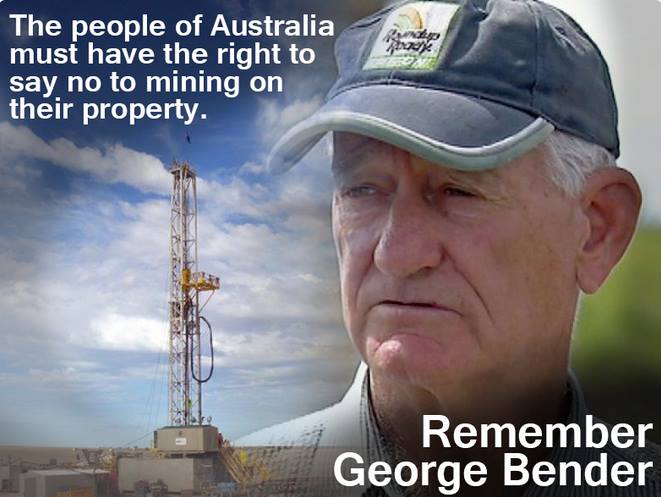
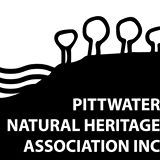
SUNDAY MORNING BIRDWATCHING with PNHA
Would you like to know more about our local birds and explore our bushland reserves? Then join us on one of our bird walks:
PNHA Birdwatching 8am Sunday 25 September, Warriewood Wetlands, followed by Morning Tea and a talk on the Birds of Warriewood Wetlands at 9.30am.
Warriewood Wetlands is one of Sydney’s birding hotspots with over 150 species recorded. Come along and see how many you can find.
At 9.30am, after the walk, join us for morning tea and a talk on the birds of Warriewood Wetlands provided by PNHA. We are holding this event as part of the Friends of Narrabeen Lagoon Catchment's Narrabeen Spring Celebration.
Meet: 8am for the walk, and/or come at 9.30am for the morning tea and talk, Katoa Close, off Garden St, North Narrabeen.
Bring: For the walk: Binoculars, water, insect repellent, hat. Morning tea will be provided (see Bookings)
Bookings: Please book this time, for catering. Text or call 0439 409 202.
Our last walk of the year is at 7.30am on Sunday 27 November at Warriewood Wetlands. The summer migratory species will have arrived and the Wetlands will be home to nesting birds and birds with young. there should be plenty to see.Meet at Katoa Close, North Narrabeen.
Most walks last a couple of hours. Bring binoculars and morning tea for afterwards if you like. Contact pnhabirdwatching@gmail.com for details of each walk.
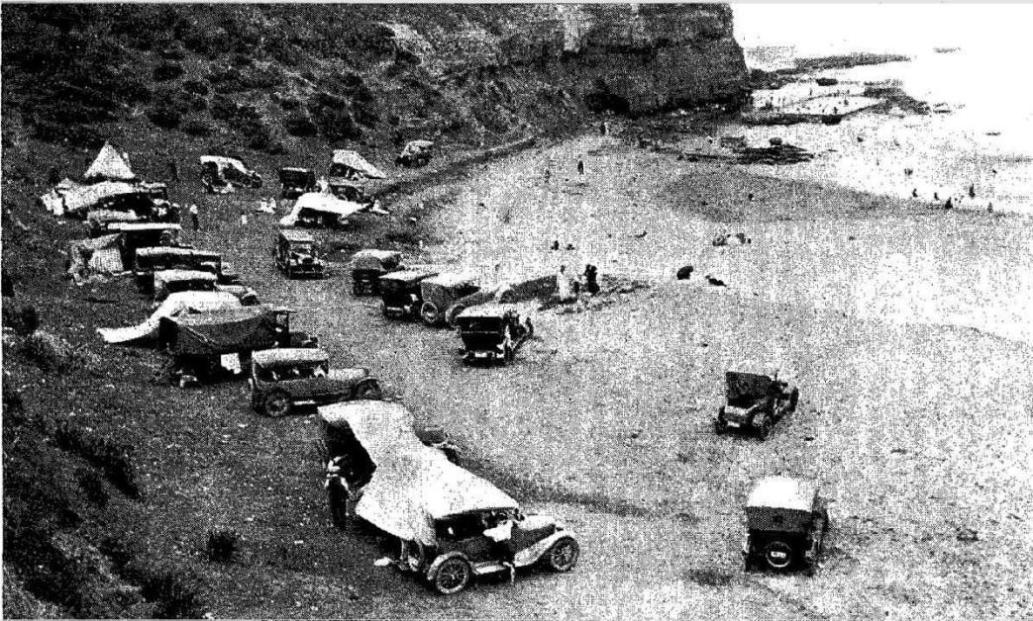
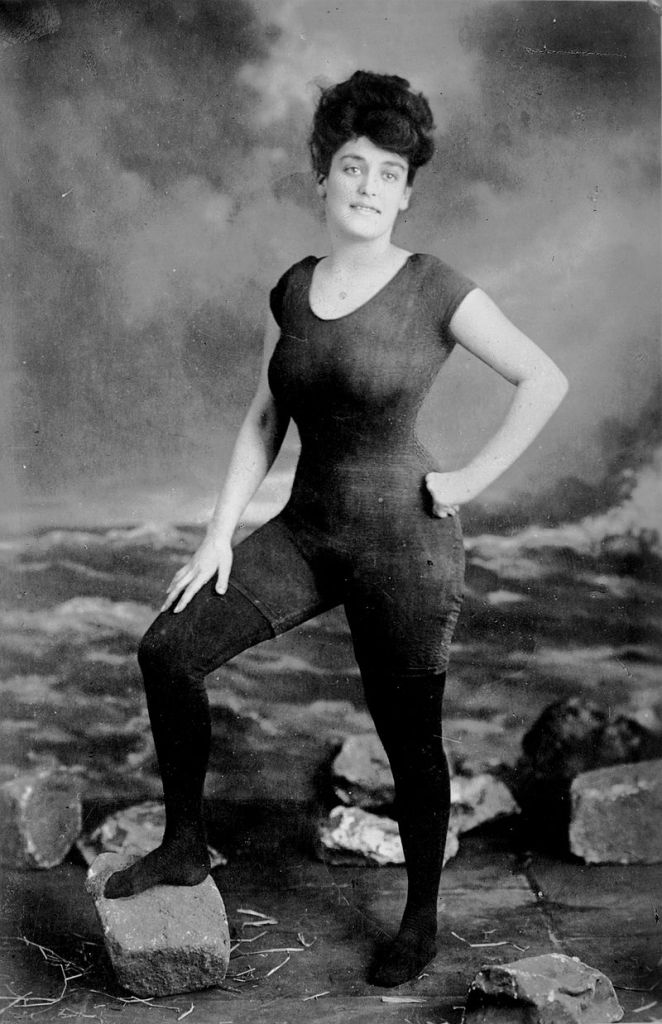 The Film that runs below is from the National Collection. c1912. Annette Kellerman, champion diver, swimmer and water ballet artiste, gives a diving demonstration in front of a group of admirers at a swimming pool. Her body is described by Harvard University Professor Sargent as 'the most perfect woman of modern times. She is almost exactly the same measurements as the estimated one of the statue of the most perfectly formed woman of ancient times, Venus de Milo'. Concludes with a shot of the Venus de Milo.
The Film that runs below is from the National Collection. c1912. Annette Kellerman, champion diver, swimmer and water ballet artiste, gives a diving demonstration in front of a group of admirers at a swimming pool. Her body is described by Harvard University Professor Sargent as 'the most perfect woman of modern times. She is almost exactly the same measurements as the estimated one of the statue of the most perfectly formed woman of ancient times, Venus de Milo'. Concludes with a shot of the Venus de Milo.